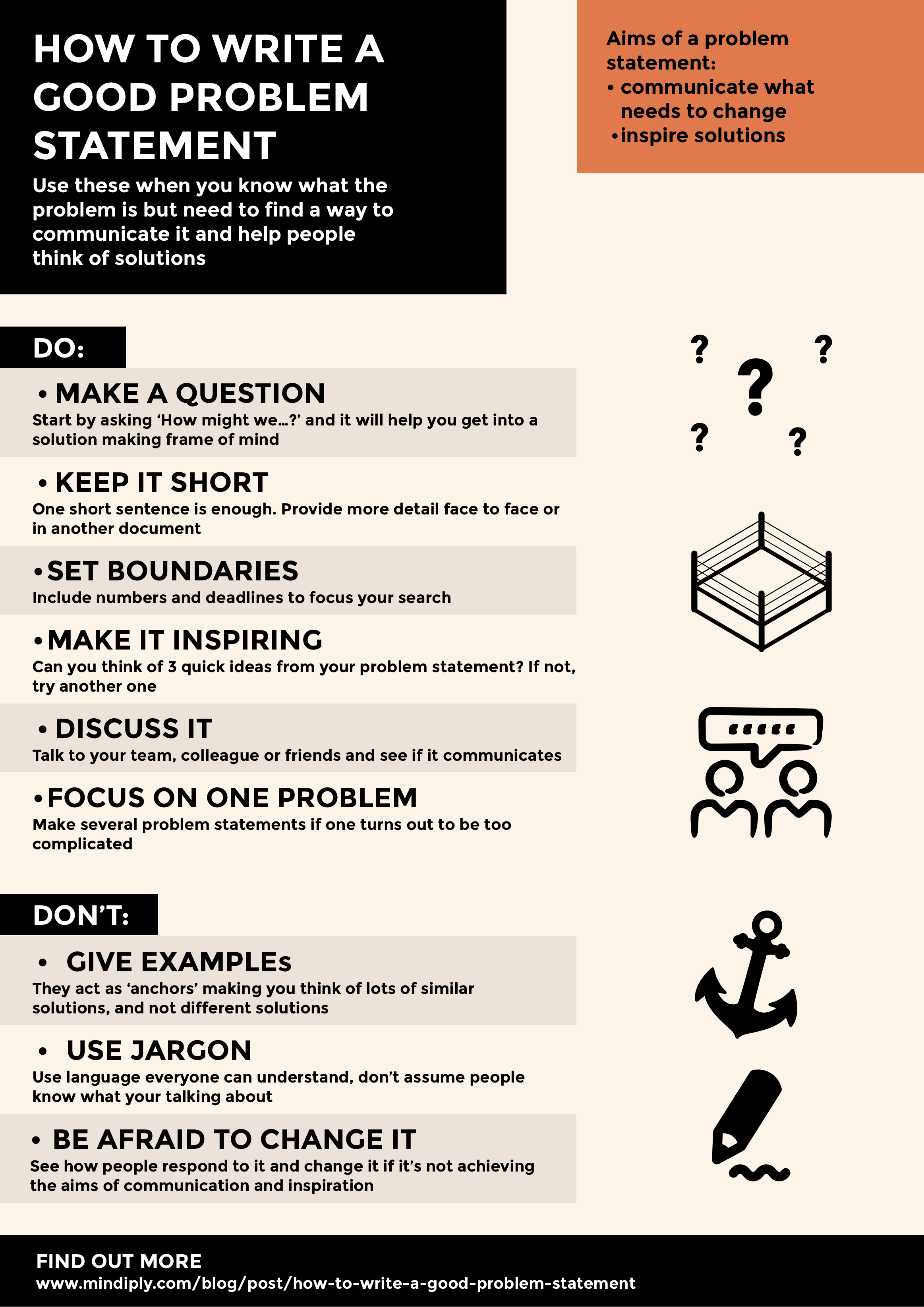Do’s and Don'ts of writing a problem statement
Sarah Hutchinson17 Jul 17

Text of infographic below:
Use these when you know what the problem is but need to find a way to communicate it and help people think of solutions.
Aims of a problem statement:
- communicate what needs to change
- inspire solutions
Do:
- MAKE A QUESTION
Start by asking ‘How might we…?’ and it will help you get into a solution making frame of mind
- KEEP IT SHORT
One short sentence is enough. Provide more detail face to face or in another document
- SET BOUNDARIES
Include numbers and deadlines to focus your search
- MAKE IT INSPIRING
Can you think of 3 quick ideas from your problem statement? If not, try another one
- DISCUSS IT
Talk to your team, colleague or friends and see if it communicates
FOCUS ON ONE PROBLEM
Make several problem statements if one turns out to be too complicated
Don't:
- GIVE EXAMPLEs
They act as ‘anchors’ making you think of lots of similar solutions, and not different solutions
- USE JARGON
Use language everyone can understand, don’t assume people know what your talking about
- BE AFRAID TO CHANGE IT
See how people respond to it and change it if it’s not achieving the aims of communication and inspiration
Do you find writing problem statements useful? We'd love to hear about your experience and get your tips. You can email us or write on our Facebook page.







